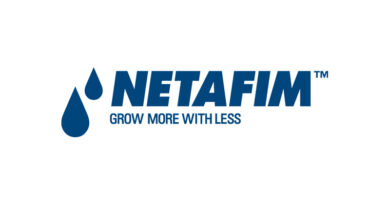Union Budget 2023 must push for adoption of drip Irrigation in field crops: Mr. Randhir Chauhan, MD of Netafim India
27 January 2023, New Delhi: The Agriculture industry has high expectations from the upcoming budget 2023-24 as the budget has been seeing growth year over year. This would bring in necessary investments in the agriculture sector and support farmers through various centrally sponsored schemes of the Government of India.
Mr. Randhir Chauhan, MD, Netafim India, and SVP Netafim shares his expectations from the Union Budget 2023.

Process streamlining measures in irrigation subsidy
The delays in the disbursal of micro-irrigation subsidies under the PMKSY program have hampered its progress. An online portal for an end-to-end process execution and visibility, transparency in the process for fund disbursement, ensuring checkpoints at various stages, and adherence to timelines would bring efficiency in subsidy disbursal and support farmers to be debt-free in a faster way.
Diversification programs to increase productivity and value in different crops like oilseeds, oil palm, and rice with a special focus
The 12 percent of the cropped area under Fruits & Vegetables (F&V) leads to 24 percent in value terms, in contrast to 13 percent land under oilseeds which gives only 6 percent in value terms because of lack of scalability. Addressing the domestic demand for edible oils, it is inevitable to promote domestic oilseeds and oil palm cultivation with higher productivity measures. Similarly, rice being one of the crucial crops both in terms of area coverage and usage of water, promoting drip technology will help increase the yield, save water and reduce carbon emissions. Drip irrigation adoption also facilitates crop diversification, thus, making a direct impact on farmer incomes.
Making PDMC a Centrally Sponsored Scheme (CSS) with mission mode execution through PMU (Project Management Unit)
The 10 million hectares coverage target in 5 years has current achievement levels at ~50 percent. It is primarily because there are certain gaps in States alignment with the Centre in terms of execution of the scheme and overall focus. Making PDMC a CSS scheme with a mission mode execution focus through Project Management Unit (PMU) like other key flagship schemes will go a long way in overall achievement. Basis the assessment, the subsidy can be capped at 50 percent.
Need a push for the adoption of Drip irrigation in field crops like Rice and wheat
Looking at the ever-depleting Ground water table, policymakers should push for Drip irrigation usage in water-guzzling crops such as rice, wheat, and sugarcane. Currently, the penetration of drip technology in these crops is low. Additionally, drip irrigation helps in reducing Greenhouse gas in crops like rice.
Providing infrastructure status to the Micro-irrigation industry
Infrastructure status would help the micro-irrigation manufacturer (95% of which comes under MSME) to reduce operating costs, thereby accelerating the industry growth, and bringing the equipment cost down for the farmer community.
Aligning different schemes together for exponential benefit – Solar and Micro-irrigation, Agriculture alongside Solar installations, and others
Focus on renewable energy like solar will ensure energy security, especially in agriculture and the rural landscape as well as address environmental concerns. Making farmers energy-sufficient would also reduce the burden on government energy subsidy bills. Solar installation-friendly agriculture would help farmers with reduced operational costs, boost land utilization and improve overall income.
Focus on creating infrastructures to support innovation and digitalization
Dedicated focus and fund allocation in the upcoming budget for infrastructure in rural areas to support the digitalization of agriculture will put the sector growth on the fast track. Currently, India is spending less than 1% of Agri GDP on R&D. An Agri innovation fund, which supports ag-tech solutions, start-ups, and digitalization at different levels of the Agri value chain can transform the agriculture economy in the future.
Policy for recycling in Agriculture
Plastics are used extensively in farming. Focus on creating sustainable means for disposing of plastics and policy intervention for recycling plastic that is used in agriculture would go a long way to align environmental conservation.
Also Read: Agriculture in India
(For Latest Agriculture News & Updates, follow Krishak Jagat on Google News)















